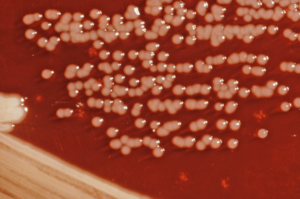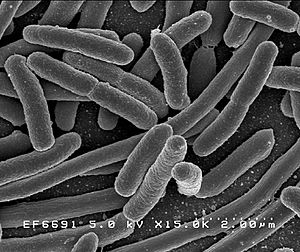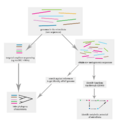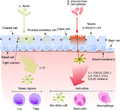Human microbiome facts for kids
The human microbiome is all the tiny living things that call our bodies home. These amazing microorganisms live on our skin, in our mouths, eyes, and especially in our gut. They include different types of bacteria, archaea, fungi, and single-celled organisms called eukaryotes (like protozoa).
It might surprise you, but we carry way more of these tiny microbes than human cells! Our bodies have about 100 trillion cells. But we have about ten times that many microorganisms just in our intestines!
Contents
What is the Human Microbiome?
The term "microbiome" describes the entire community of microorganisms that live together in a specific place, like our bodies. These tiny creatures can be:
- Commensal: They live with us without causing harm or helping us.
- Symbiotic: They live with us and help us in some way.
- Pathogenic: They can cause disease if they grow too much or get into the wrong place.
A scientist named Joshua Lederberg first used the word "microbiome." He believed these microorganisms were very important for our health. Sometimes, scientists use "microbiome" for the genes of these microbes and "microbiota" for the microbes themselves. But usually, these words mean the same thing.
Our Tiny Helpers
Many of these organisms are helpful to us. Most of them don't have any known effect; they just live with us. The ones that are normally found in our bodies are called "normal flora." Under normal conditions, they don't make us sick. In fact, they can even help keep us healthy!
For example, the microbes in our gut flora are very important. They help us digest food and get nutrients. They also help train our immune system. If we reduce these helpful gut microbes, our health can be affected.
Even though "flora" usually means plants, "gut flora" is a common term for the microbes in our intestines. A better word for all the organisms in an ecosystem is "biota." So, "microbiota" is a good term for bacteria and other tiny organisms.
Archaea: Another Type of Microbe
Scientists have learned that not all the microbes in our bodies are bacteria. Some are a very old type of single-celled organism called archaea. These include methanogens, which produce methane gas. This gas can sometimes cause flatulence (passing gas).
Most of the microbes in our bodies are non-pathogenic. This means they don't cause disease unless something goes wrong. They usually live in harmony with us, working together in a symbiotic relationship.
Related pages
Images for kids
See also
 In Spanish: Microbiota humana para niños
In Spanish: Microbiota humana para niños







